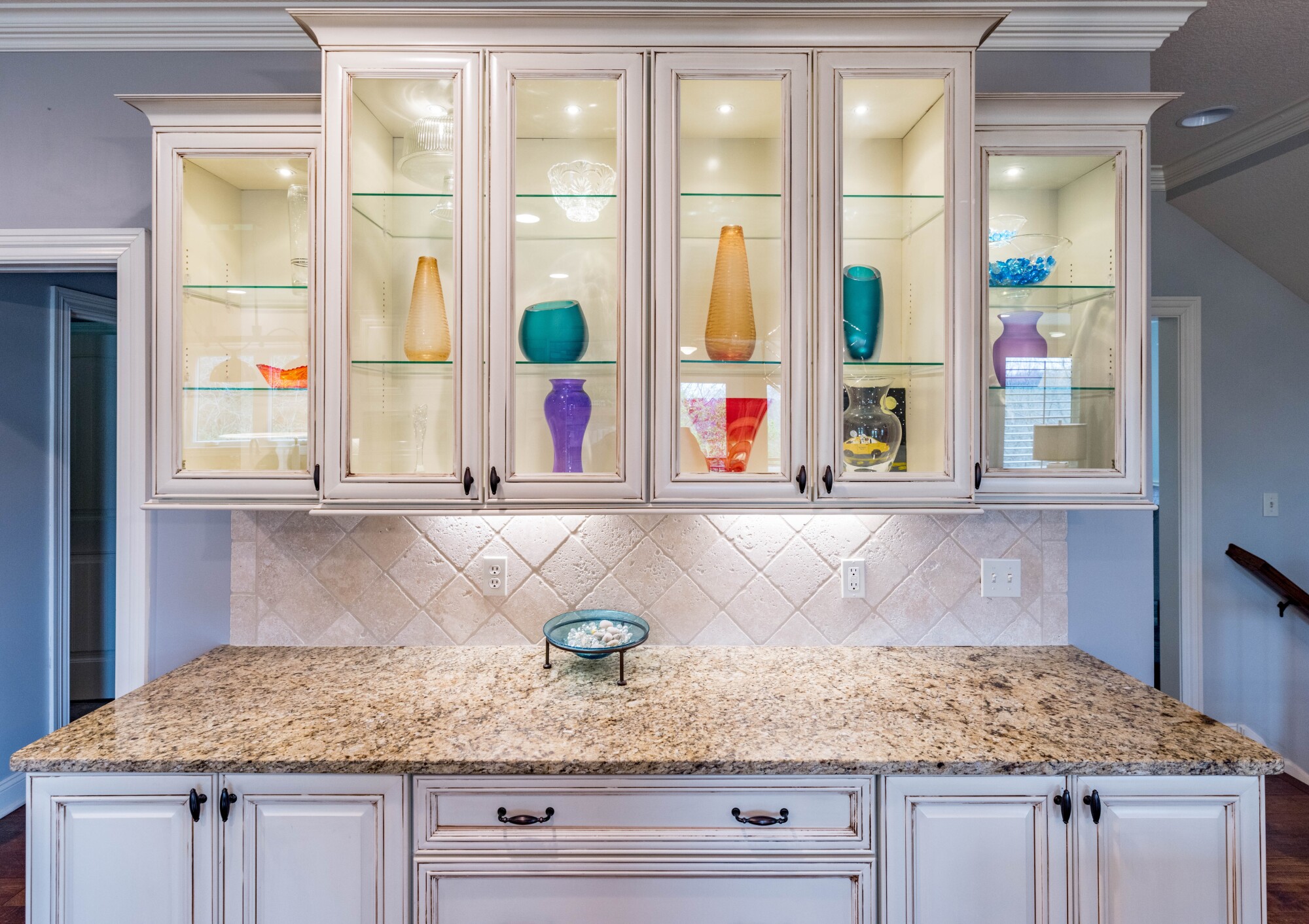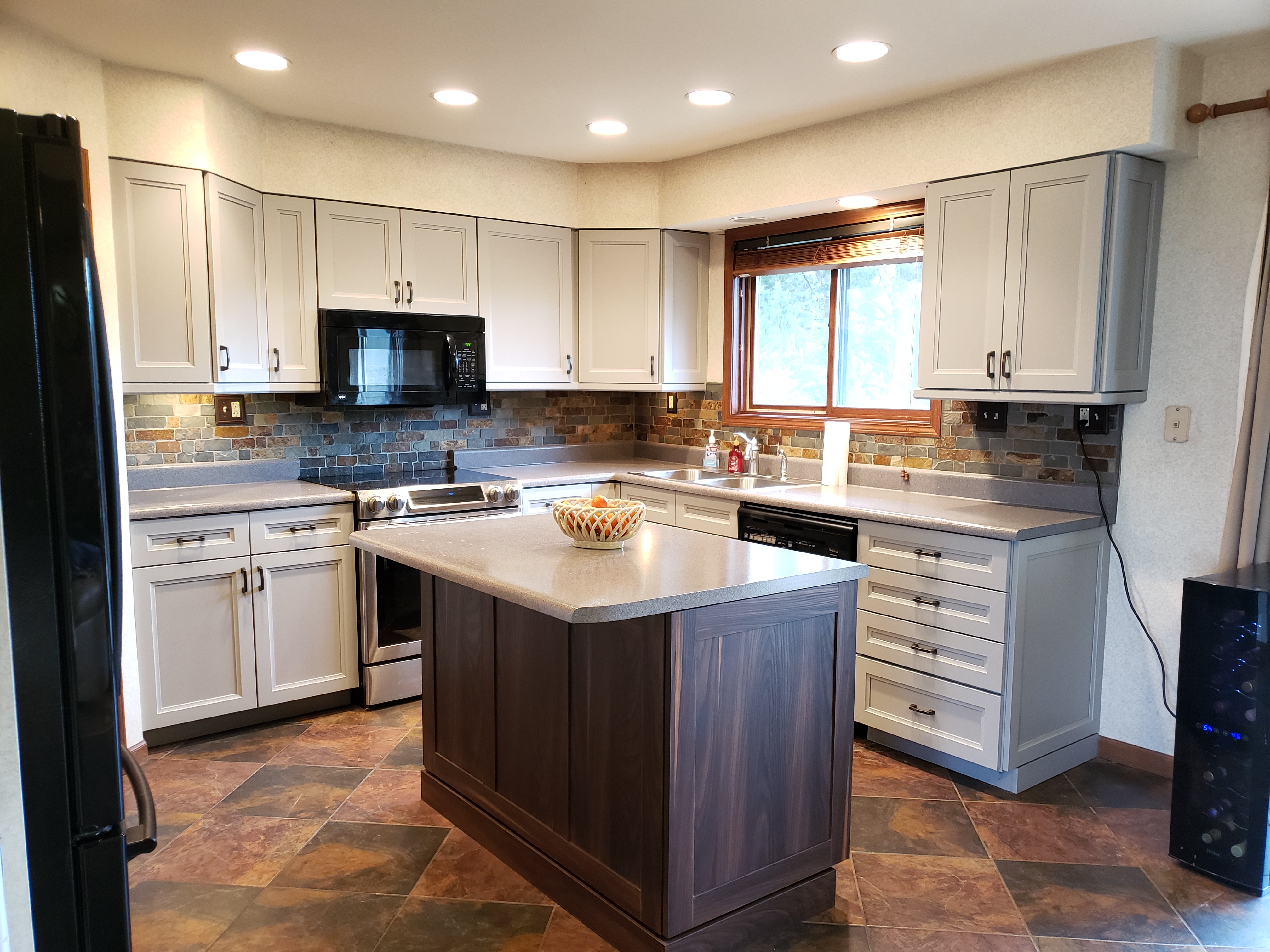Before & After: Cathedral Cabinet Door Transformations

Revitalizing your kitchen or bathroom cabinets can dramatically enhance the overall aesthetic of your home. Cathedral cabinet doors, with their distinctive arched tops, offer a unique opportunity for creative expression. This guide explores the process of transforming these doors, from assessing damage and selecting the right materials to achieving a variety of design styles.
Refinishing Cathedral Cabinet Doors: Color Choices and Techniques
Refinishing cathedral cabinet doors involves careful preparation and execution. The first step is to choose a finish that complements your existing décor. For a modern look, consider using a semi-gloss or high-gloss paint to create a sleek, polished surface. Matte finishes offer a more subdued, contemporary feel. The choice between paint and stain depends on the desired outcome and the condition of the wood. Oil-based paints offer superior durability and a smoother finish, but require longer drying times and thorough ventilation. Water-based paints are easier to clean up and have lower VOCs, making them a more environmentally friendly option. Applying multiple thin coats is crucial for achieving a uniform, professional-looking finish. Sanding between coats helps to create a smooth surface and prevents the build-up of paint.
Removing and Installing Cabinet Hardware
Before refinishing, carefully remove all existing hardware. Use a screwdriver appropriate for the type of screws used (Phillips, flathead, etc.). If screws are stubborn, apply a penetrating oil to loosen them. Once the hardware is removed, clean the door thoroughly to remove any dust, dirt, or residue. When installing new hardware, measure and mark the location of the new holes. Pre-drill pilot holes to prevent the wood from splitting. Choose hardware that complements your chosen design aesthetic. For a modern look, consider sleek, minimalist knobs or pulls. Rustic styles often feature distressed metal or wooden hardware. Traditional designs might incorporate ornate brass or porcelain knobs.
Repairing Minor Damage to Cathedral Cabinet Doors
Minor scratches and dents can be easily repaired before painting or staining. Start by cleaning the damaged area. Apply wood filler, using a putty knife to fill the imperfections. Allow the filler to dry completely according to the manufacturer’s instructions. Once dry, sand the area smooth using fine-grit sandpaper. This will ensure a smooth surface for painting or staining. Pay attention to the grain of the wood to avoid creating visible inconsistencies. Repeat the process if necessary until the repair is seamless.
Three Makeover Styles for Cathedral Cabinet Doors
The following table Artikels three distinct makeover styles for cathedral cabinet doors, showcasing the versatility of these unique features.
| Style | Paint Color | Hardware | Description |
|---|---|---|---|
| Rustic | Warm gray or weathered oak stain | Distressed bronze or black metal pulls | Emphasizes natural wood grain with a slightly worn, aged appearance. The hardware adds to the rustic charm. |
| Minimalist | Clean white or light gray | Sleek brushed nickel or chrome bar pulls | Creates a clean, uncluttered look. The simple hardware complements the minimalist aesthetic. |
| Traditional | Creamy white or ivory | Ornate brass or porcelain knobs | Evokes a classic, elegant feel. The detailed hardware adds a touch of sophistication. |
Unique Design Ideas for Cathedral Cabinet Doors: Cathedral Cabinet Door Makeover

Transforming cathedral cabinet doors offers a fantastic opportunity to inject personality and style into your kitchen or bathroom. The arched design provides a unique canvas for creative expression, allowing for both subtle enhancements and dramatic makeovers. Let’s explore some innovative design ideas to elevate these architectural features.
Stenciling and Decorative Painting Techniques
Stenciling and decorative painting techniques offer a versatile and relatively affordable way to personalize cathedral cabinet doors. The arched shape lends itself beautifully to flowing patterns and symmetrical designs. Consider using stencils to create repeating patterns like floral motifs, geometric shapes, or even delicate damask designs. For a more whimsical touch, hand-painted elements can be incorporated, such as birds, butterflies, or stylized foliage, complementing the stencil work. The use of metallic paints, such as gold or silver, can add a touch of luxury, while chalk paint provides a softer, more vintage aesthetic. Careful masking and layering of colors will allow you to create depth and dimension in your design. For example, a stencil of a blossoming cherry branch could be layered with varying shades of pink and green to create a realistic and visually appealing effect.
Material Choices for Cathedral Cabinet Door Updates
Choosing the right material significantly impacts the final look, durability, and cost of your project. Wood veneer offers a natural, elegant aesthetic at a relatively affordable price point. It can be easily stained or painted to match your existing décor, offering excellent versatility. However, wood veneer is less durable than solid wood and can be susceptible to damage from moisture or impacts. Laminate, on the other hand, is highly durable and water-resistant, making it a practical choice for high-traffic areas like kitchens. It’s also more budget-friendly than wood veneer. However, laminate can lack the natural warmth and depth of wood, and damage is more difficult to repair. Solid wood, while the most expensive option, provides superior durability and a luxurious look.
Incorporating Glass or Mirrored Inserts
Glass or mirrored inserts can dramatically transform the look of cathedral cabinet doors, adding light and creating a sense of spaciousness. Consider using frosted glass for a softer, more diffused light, or clear glass to showcase the interior of the cabinet. Mirrored inserts can make a small space feel larger, and they add a touch of glamour. The inserts can be incorporated in various ways: a full-length panel within the arched section, smaller panels flanking the arch, or even geometric shapes integrated into the design. For a truly unique look, consider using textured or colored glass. For example, a mirrored insert framed by stained glass could create a striking focal point.
Creating a Faux-Finish Effect
Achieving a convincing faux-finish effect on a cathedral cabinet door can dramatically elevate the look without the high cost of genuine materials. To mimic the look of expensive wood or stone, consider using a combination of paint, glaze, and distressing techniques.
- Preparation: Clean and sand the door surface to ensure proper paint adhesion.
- Base Coat: Apply a base coat of paint in a color that complements your desired faux finish.
- Glazing: Apply a glaze in a contrasting color, wiping away excess to reveal the base coat in areas. This creates depth and highlights the wood grain or stone texture.
- Dry Brushing: Use a dry brush with a darker shade of paint to create highlights and shadows, mimicking the natural variations in wood or stone.
- Distressing: Use sandpaper to gently distress edges and corners, creating a worn, antique look.
- Sealing: Apply a clear sealant to protect the finish and enhance its longevity.
For example, to mimic the look of marble, you might use a white base coat, a grey glaze, and dry brushing with darker grey and white to create veining.
Budget-Friendly Cathedral Cabinet Door Makeovers

Transforming your cathedral cabinet doors doesn’t require a king’s ransom. With careful planning and a resourceful approach, you can achieve a stunning makeover without breaking the bank. This guide Artikels cost-effective strategies, from material selection to labor-saving techniques, ensuring a beautiful and budget-friendly outcome.
Cost Breakdown for a Cathedral Cabinet Door Makeover
A detailed cost analysis helps in budgeting effectively. The overall expense varies significantly depending on the chosen method (painting, refacing, or a combination), the number of doors, and the quality of materials. Let’s consider a scenario involving five cathedral cabinet doors.
| Item | Painting | Refacing |
|---|---|---|
| Materials (Primer, Paint, Sandpaper, Cleaning Supplies) | $50 – $100 | $200 – $500 (depending on veneer type and quality) |
| Tools (Brushes, Rollers, Drop Cloths, Putty Knife) | $20 – $40 (if you don’t own them already) | $20 – $40 (if you don’t own them already) |
| Hardware (Knobs, Handles) | $0 – $50 (reuse existing or choose inexpensive options) | $50 – $150 (often included with refacing kits, but can vary greatly) |
| Labor (DIY vs. Professional) | $0 (DIY) or $200 – $500 (Professional) | $500 – $1500 (Professional typically required) |
| Total Estimated Cost | $70 – $200 (DIY) or $270 – $700 (Professional) | $320 – $1150 (Professional typically required) |
Note: Prices are estimates and can vary based on location and specific materials chosen.
Affordable Alternatives and Repurposing
Expensive hardware can significantly inflate the budget. Consider repurposing existing knobs or handles from other areas of your home. Alternatively, explore affordable options at thrift stores, flea markets, or online marketplaces like eBay or Craigslist. You can often find beautiful antique or vintage hardware for a fraction of the cost of new ones. For decorative elements, consider using stencils to create patterns on painted doors or applying decoupage techniques with patterned paper or fabric scraps.
Cleaning and Preparation on a Budget
Thorough cleaning is crucial for a successful paint or stain job. Start by removing dust and grime with a mixture of warm water and mild dish soap. For stubborn grease or grime, add a small amount of baking soda to the mixture. A stiff-bristled brush can be used to scrub the surfaces effectively. Sanding is important to create a smooth surface for paint adhesion. Use inexpensive sandpaper and ensure proper ventilation. For stubborn imperfections, use wood filler and let it dry completely before sanding.
Budget Makeover: Cathedral Cabinet Doors (Revised), Cathedral cabinet door makeover
Forget expensive renovations! Transforming your cathedral cabinet doors can be surprisingly affordable. Focus on smart choices, like choosing a cost-effective paint and using readily available tools. Repurpose existing hardware to save money on new knobs and handles. A little elbow grease and creativity go a long way.
Remember: Prioritize thorough cleaning and preparation. This single step significantly impacts the final result and minimizes the need for costly repairs or repainting later.
